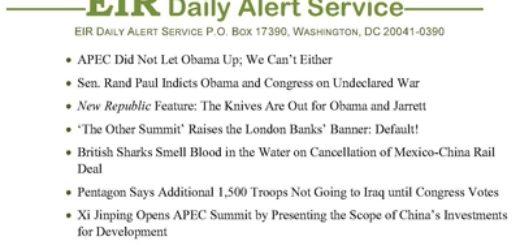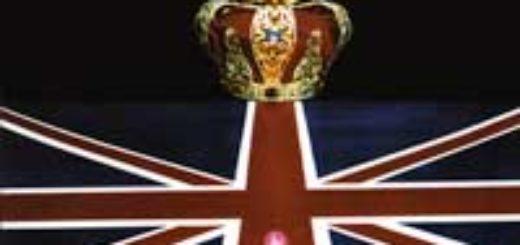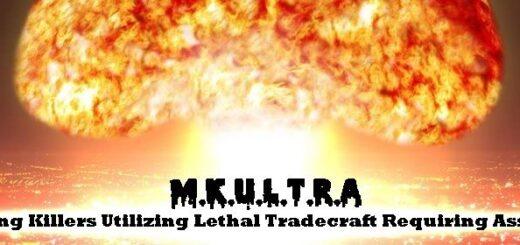Volume 5, Number 232
EIR Daily Alert Service
P.O. Box 17390, Washington, DC 20041-0390
|
|
|
|
With Another Financial Crash Approaching, We Have to Start a New International Credit System
Corporate Debt Crash Warnings Get Louder, as Stocks, Bonds, Fall
New York Times in Strong China Reassessment, Acknowledges the
American Dream is Alive in China
Steele's Intelligence on Putin Contradicted the CIA,
but DOJ and FBI Used it Anyways
Spanish New Silk Road Think-Tank Holds Madrid Organizing Meeting
Japan and Russia Post WW2 Relations Warm, U.S. Remains Cool
British Circulate Draft Resolution Ending War in Yemen
China's BeiDou Launch Clears Way For Chang'E-4 Mission
to Far Side of the Moon
EDITORIAL
With Another Financial Crash Approaching, We Have To Start a New International Credit System
Nov. 20 (EIRNS)—In 10 days President Donald Trump, freer than before to act after withstanding the U.S. midterm elections, will begin a series of “summit” meetings with other major powers’ Presidents starting at the meeting of the Group of 20 nations Nov. 30.
While these crucial meetings approach, a financial collapse as bad or worse than that of 2007-08 is also approaching. After more than two months’ stock market slides, stock, bond, and corporate loan markets are now all falling simultaneously, while experts warn over and over that the corporate “junk debt” markets in the United States and Europe are quickly turning into the subprime mortgage markets of 2007-08. Tech giants, despite buying huge volumes of their own stocks, are leading the plunge. Federal Reserve governors are turning in fear away from their next planned interest rate increase—too late to make a difference.
At such a time it is truly insane for major Western European governments to be throwing “climate taxes” and “carbon taxes” and “electricity taxes” against their already-sinking economies and people, and demanding deep austerity cuts from nations like Italy which are not on their strange wavelength. This is tragic, but those major Western European “leaders” are very obviously on their way to being removed by their people.
It is the leaders of the United States, China, Russia and India, at least, which must act to prevent an economic crash—and we know what it is they can do. Helga Zepp-LaRouche, President of the Schiller Institute, said today, “This is a situation to mobilize all-out for a ‘New Bretton Woods’ monetary and credit system. We should take a campaign orientation over the next two weeks”—approaching those upcoming “summit” meetings as if in the last days’ mobilization for a crucial election.
All of Lyndon LaRouche’s well-known “Four Laws” as he put them down in 2014 are urgent and appropriate right now. Reinstate the Glass-Steagall Act to separate and protect commercial banks and people’s savings from the Wall Street casino’s collapse. Form a national bank or a credit institution like FDR’s Reconstruction Finance Corporation. Apply the credit it generates to build high-technology new economic infrastructure, to raise the economy’s productivity. Let science lead: develop nuclear fusion technologies as quickly as possible, and go for manned colonization of the Moon and exploration of the Solar System.
This is the time for those “Four Laws” of Lyndon LaRouche; they are necessary now. But he has argued in speeches and writings since well before the 2008 crash, that these actions will flow from an agreement among the leaders of the great powers. They can initiate a new credit system; create by cooperation an international development bank to invest trillions in new infrastructure all over the world; join their manned space exploration programs into an effort that can accomplish anything; break the barrier to unlimited power from fusion energy.
The other major powers are already committed to some or all of these scientific objectives; the United States dollar has the greatest power in forming a new credit system and stabilizing currency values.
This “international action” is now the American people’s responsibility. President Trump can jaw with Congress, but this is the big stage on which he can act quickly to stop an economic collapse, and avert confrontations which could lead to world war.
The American people, through whatever formal and informal groups and organizations they can act, must get it done.
COLLAPSING WESTERN FINANCIAL SYSTEM
Corporate Debt Crash Warnings Get Louder, as Stocks, Bonds Fall
Nov. 20 (EIRNS)—A succession of warnings of a blowout of the $3.5 trillion corporate “leveraged loan” markets, is coinciding with an accelerating international slide in stock markets, and with a sharp deceleration of economic growth across Europe and the United States.
The very high-level warnings began with the Bank for International Settlements in its annual report released in July. That was followed by the Bank of England in October—at a time when its Governor Mark Carney again cautioned that a “hard Brexit” could really destabilize the financial derivatives markets—and then by the IMF’s explicit warning of deteriorating corporate bond markets on Nov. 12 in the “IMF Blog.” Sen. Elizabeth Warren on Nov. 14 wrote to the five main U.S. bank regulators: “I am concerned that the large [corporate] leveraged lending market exhibits many of the characteristics of the pre-2008 subprime mortgage market.” And Janet Yellen, the former chair of the Federal Reserve, had given an interview posted Oct. 25 to the Financial Times pointing to a “huge deterioration” in lending standards in the leveraged loan markets. She warned that these loans could soon bankrupt a large number of companies, making an economic downturn into something much worse. She said, “You are supposed to realize from the [2008] crisis: It is not just a question of what banks do that imperils themselves, it is what they do that can create risks to the entire financial system.”
Although $1.5 trillion in corporate leveraged loans have been issued just in 2017-18, and the market in the United States has zoomed up to $1.3 trillion, current U.S. regulators have said nothing about this. But since Oct. 1, the interest rates in the junk debt markets (leveraged loans, junk bonds) have finally started to jump. the average rate in the Bloomberg Barclays U.S. Corporate High Yield Total Return Index has risen from 6.2% to 7.2% in those 45 days. The lower grades of junk debt, like “CCC,” have risen on average from 8.8% to 10.8% in the same period.
That means the funds leaving trans-Atlantic stock markets as they fall, are not entering the bond markets, but heading for the financial-distress “safe have” of the huge U.S. Treasury market—there, interest rates have dropped nearly 0.25% in a month. Falling stock values are being led down by the FAANG (Facebook, Apple. Amazon, Netflix, Google) tech stocks, despite these companies buying up their own stock at record rates, $115 billion worth from January to September by these five alone.
Underlying this incipient crash, the American underlying economy has now joined those of Europe in slowing down. U.S. industrial production, growing by 0.4%/month in June, has slowed for four straight months, to 0.1% growth in October. U.S. real wages turned back down in October. For production and non-supervisory workers, both average hourly and average weekly wages fell in real terms by 0.1% in October. And housing is slumping; building of single-family homes has dropped for three consecutive months through October, as have building permits. Sales of single-family homes have also been dropping through the Fall. Years of 5.5-6.0% home price inflation and 2-3% wage/salary growth have produced an “affordability problem,” which with mortgage rates suddenly at 5% has become an “affordability crisis.”
U.S. POLITICAL AND ECONOMIC
New York Times in Strong China Reassessment, Acknowledges, ‘The American Dream Is Alive—in China’
Nov. 20 (EIRNS)—The Sunday New York Times of Nov. 18 launched a series of articles on China which, to a significant extent, countered many of the lies that have been spread by the anti-China barrage of the past months, and encapsulated by the mad Vice President Mike Pence, first at the Hudson Institute on Oct. 4 and then at the ASEAN and APEC meetings in Asia last week. But readers need to remember how the British Empire has occasionally been forced to acknowledge its failed policies, in order to restructure its approach to preserve the Empire. The Times lays out a warning that a conflict may well be inevitable or necessary.
The package includes Part 1 of a five-part series titled “China Rules—They Didn’t Like the West’s Playbook. So They Wrote Their Own.” Part 1 is titled “The Land That Failed To Fail,” by the Times’ Asia Editor Philip Pan. The next four parts are due in the Sunday New York Times Nov. 25 issue. Part 1 was accompanied by five separate articles by other writers packaged as “How China Became a Superpower.”
Part 1 of “China Rules” by Pan describes at some length how China rejected the West’s (read British Empire) formula for how nations should behave. “Eight U.S. Presidents assumed,” he writes, “that China would eventually bend…. Prosperity would fuel popular demands for political freedom and bring China into the fold of democratic nations. Or, the Chinese economy would falter under the weight of authoritarian rule and bureaucratic rot. But neither happened.” His kicker is: “The West was sure the Chinese approach would not work. It just had to wait. It’s still waiting.”
Pan reviews the reform process, beginning in 1984 when a number of economists around Deng Xiaoping met in Shanghai to discuss “how to catch up with the West.” After 40 years of uninterrupted growth, Pan says, “China now leads the world in the number of homeowners, internet users, college grads, and by some accounts, billionaires. Extreme poverty has fallen to less than 1%,” and China has become the “most significant rival to the U.S. since the fall of the U.S.S.R.”
He then warns that Xi Jinping is “steering toward repression again, tightening his grip on society, concentrating power in his own hands, setting up rule for life,” and so on. The remaining four parts, to be published Sunday, Nov. 25, are titled: “How To Control Your Citizens: Opportunity, Nationalism, Fear”; “What’s China Doing There? And There? Staking Its Claim as a World Power”; “China’s economy became #2 by defying #1. Now it’s at a crossroads”; and “The Road to Confrontation.”
Of the accompanying articles in the Nov. 18 issue, one is an attack on the Belt and Road, reviewing 600 projects around the world, including 41 pipelines, 203 bridges, roads and rail lines, and 199 power plants. These are all primarily aimed at facilitating China itself, they claim, while the power plants are mostly coal fired, “which collectively pollute more than Spain.” Their ports, they assert, could be used by the PLA Navy. Three others are on: China’s effort to equal the West in microchips; China’s internet companies matching those of the U.S.; and China’s influence on Hollywood.
The most interesting, however, is titled “The American Dream Is Alive. In China.” It asks the reader to imagine two 19-year-olds, both raised in poverty—one in the U.S. and one in China. Who has “the better chance at upward mobility?” In the past, this would easily be the American, it says, following “the American dream.” But today, “China has risen so quickly that your chances of improving your station in life there vastly exceed those in the United States.”
It goes on: “China is still much poorer over all than the United States. But the Chinese have taken a commanding lead in that most intangible but valuable of economic indicators: optimism.”
Steele’s Intelligence on Putin Contradicted the CIA, but DOJ and FBI Used It Anyway
Nov. 20 (EIRNS)—John Solomon, a competent intelligence contributor to The Hill, revealed there yesterday that Fusion GPS’s British intelligence instigator Christopher Steele knew nothing about what was going on in Russia at the time he authored the “Steele Dossier” for the DNC in February 2016. While establishing contact with the Justice Department and FBI, “former” British MI6 agent Steele emailed some intelligence reports called “Orbis Russian Leadership Reporting” from his Orbis Business Intelligence security company to a potential client in the private sector. Steele’s cover email made a bizarre and dead-wrong claim: “Russian leader Vladimir Putin might be losing his grip on power.”
Solomon says it is not clear if Steele shared these same reports with his handlers at the DOJ, the FBI, or the State Department, but at that time, he was in contact with DOJ No. 4, then-Associate Deputy Attorney General Bruce Ohr.
In fact, Steele’s February 2016 report that Putin was weakened, directly contradicted the CIA’s own analysis of Moscow, given in the same month to Congress in the CIA’s annual global threats assessment. The CIA declared on Feb. 9, 2016, just a day after Steele sent the email, as Solomon reports, “that Putin appeared emboldened for a ‘more assertive foreign policy approach’ and a Western disinformation campaign because his popularity was soaring in his homeland.” The CIA wrote: “President Vladimir Putin has sustained his popular approval at or near record highs for nearly two years after illegally annexing Crimea.”
Steele’s correspondence with the business associate, Solomon writes, is the latest piece of evidence suggesting that Steele “may not have been as well-versed or -sourced in Russian intelligence as he was portrayed when the FBI used his now-infamous anti-Trump dossier to support a request for a Foreign Intelligence Surveillance Act (FISA) warrant against Trump campaign adviser Carter Page.”
Both the DOJ’s Inspector General and multiple Congressional committees are now investigating whether the FBI properly handled the Trump collusion case. The FBI has an obligation to supply only verified information to support a FISA warrant, which it failed to do. But Solomon says his sources say that FBI counterintelligence analyst Jon Moffa recently told Congressional investigators in a transcribed interview that the Bureau was still trying to verify the Steele dossier when it was submitted as evidence for the FISA warrant. Moffa told House investigators: “Our work on verifying facts of the FISA would have been—facts of the reporting would have been ongoing at the time the FISA was generated,” according to the transcript.
Even Fusion GPS founder Glenn Simpson had his doubts. In a December 2016 meeting with Bruce Ohr, Simpson told the then-Associate Deputy Attorney General that Steele’s main source wasn’t in Moscow, but was a former Russian intelligence figure in Washington, Ohr’s notes show.
Solomon concludes, “Steele’s intelligence was hearsay collected a continent away from Moscow….
“If the FBI had reviewed it and compared it to the CIA’s own assessment, there might have been reason to doubt Steele’s Russia expertise….
“We know now, two years later, that Putin wasn’t on shaky ground but, rather, had solidified his power. And we know that, after two years of probing, the FBI has not turned up any public evidence of collusion, either.
“There’s a good chance Steele was wrong about both.”
THE NEW GLOBAL ECONOMIC ORDER
Spanish New Silk Road Think-Tank Holds Madrid Organizing Meeting
Nov. 20 (EIRNS)—On the eve of Chinese President Xi Jinping’s Nov. 27-29 visit to Spain, the 82-year-old head of Spain’s Cátedra China think-tank, Marcelo Muñoz, presented the new world order emerging under the Belt and Road Initiative to a packed audience of 150 top Spanish and foreign diplomats (including China’s ambassador to Spain), businessmen, trade unionists, Sinologists and two representatives of the international Schiller Institute, Dennis and Gretchen Small. Joining Muñoz on the panel were two former Spanish ambassadors to China.
Muñoz gave an extensive, well-documented review of the phenomenal advances of China over recent decades in all areas of domestic and international economics, in which he emphasized China’s commitment to innovation, technological advance, scientific activity, and global cooperation with other nations. The highlight of his remarks was a discussion of how the New Silk Road is creating the new world of the 21st century, which he illustrated with the signature World Land-Bridge map from the Schiller Institute’s new Special Report (without identifying the source). He highlighted four projects: the Bering Strait tunnel; the Kra Canal in Thailand; the Darién Gap in the Panama/Colombia border; and the Gibraltar Strait tunnel—with the last receiving enthusiastic support in further discussion from the floor.
Concern over the direction of U.S. policy toward China policy under President Donald Trump, and how to ensure no conflict ensues, was a major element of the presentations by Muñoz and the other panelists. Spain’s three-time former Ambassador to China Eugenio Bregolat observed that there are both sane voices in and around the administration and also hawkish ones (mentioning trade advisor Peter Navarro by name). He counterposed the U.S. reaction to China’s development today, to how the United States under Kennedy responded to the Sputnik satellite shock, by leap-frogging ahead in science and technology of its own. America should do the same today, Bregolat emphasized, and not try to stop China’s progress.
The last written question chosen to be answered was that of Dennis Small, on the Schiller Institute’s commitment to getting the United States on board with the New Silk Road, and how Muñoz thought win-win cooperation in that regard would work. Both Muñoz and Bregolat agreed that such cooperation is the solution; America should join with confidence. Muñoz emphasized the common basis for cooperation which lies in the realm of scientific cooperation, stating that Confucian philosophy is crucial to that common endeavor.
Japan and Russia Post-World War II Relations Warm, U.S. Remains Cool
Nov. 20 (EIRNS)—Japan’s Asahi Shimbun newspaper reported that Japanese Prime Minister Shinzo Abe and Russian President Vladimir Putin met in Singapore Nov. 14, and broke new ground on a peace treaty and economic relations on their two “disputed islands.” Both sides agreed to speed up the signing of the Japan-Russia Peace Treaty on the basis of the 1956 Japan-Soviet Joint Declaration, and Abe said that he would visit Russia again early next year.
An op-ed by Global Times editor Chen Yang published Nov. 18 in that Chinese daily unwrapped this happy development, and conveyed its lessons in diplomacy. Chen reports that the stage was set by Prime Minister Abe’s September re-election as head of Japan’s Liberal Democratic Party (LDP), strengthening Russia’s confidence in developing Japan-Russia relations.
With agreement by Japan and Russia on the peace treaty, bilateral relations between Japan and Russia will deepen, and progress will be made in resolving the territorial disputes, Chen says. According to Article 9 of the 1956 Japan-Soviet Joint Declaration, the U.S.S.R. would cede the Habomai Islands and Shikotan to Japan. While the signed documents authorize settling the territorial dispute, Chen points out that mainstream public opinion in both countries is by no means unanimous on this issue.
A 2016 survey by the Levada Center, an independent Russian polling agency, showed that 56% of respondents oppose ceding any island to Japan; yet, the Japanese still want complete return of the four islands known in Japan as the “Northern Territories.” To overcome these differences on the territorial issues, Chen believes Abe will insist that Habomai Islands and Shikotan might be turned into “special economic zones.” Over time, Abe has worked to solve this dispute by strengthening economic cooperation with Russia on the disputed islands.
But the Japan-U.S. Security Treaty provides that American troops in Japan could be stationed on these two islands if handed over to Japan—Russia’s biggest worry. Therefore, the most likely result of negotiations is that both countries’ leaders agree to define the two islands as special economic zones.
Global Times’ Chen Yang says this conundrum in the treaty and the disputed islands shows that “the U.S. has long been the biggest barrier. The toughening U.S. policy toward Russia affects and impedes the deepening of Japan-Russia ties. The reason why top leaders of Japan and Russia agreed to accelerate the signing of the peace treaty this time is not only because of good personal relations between the two leaders, but also because Abe tries to maintain a diplomatic distance from the U.S.,” even if complete independence from Washington is not possible.
“For example, in September 2016, Abe attended the Eastern Economic Forum held in Russia regardless of the attitude of the Obama administration. In the midst of the current U.S. trade war against China, the Abe regime has been trying to actively improve Sino-Japanese relations. While the U.S. government is advocating trade protectionism, the Abe regime is making efforts to safeguard the international multilateral trading system. Perhaps noticing the adjustments in Abe’s approach, Putin showed a more positive attitude toward the signing of the peace treaty and bilateral relations.
“…After all, with the signing of the Japan-Russia Peace Treaty, not only will Japan’s need for ‘protection’ be reduced, but also the rationality of U.S. troops’ presence in Japan or even in Northeast Asia will be weakened,” Chen determines.
STRATEGIC WAR DANGER
British Circulate Draft Resolution on Ending War in Yemen
Nov. 20 (EIRNS)—The British have circulated a draft resolution at the UN Security Council that urges Yemen’s warring parties to relaunch negotiations to end the three-year conflict and take urgent steps to tackle the humanitarian crisis. According to the Associated Press, the draft also calls on Yemen’s internationally recognized government and rival Houthi Shi’ite rebels to agree to a ceasefire around the key port of Hodeidah. The British-drafted resolution also calls on the parties “to cease all attacks on densely populated civilian areas across Yemen” and to halt missile and drone attacks “against regional countries and maritime areas.”
AFP reports that Britain circulated the draft to the 14 other council members after the Nov. 16 Security Council meeting on Yemen which heard from UN Special Envoy Martin Griffiths and UN humanitarian aid officials.
At the present time, however, there seems to be no truce anywhere in the country, despite yesterday’s statements. The AP reported an escalation in Hodeidah began late on Nov. 19 with Saudi coalition airstrikes hitting the rebels in and around Hodeidah. There was also street fighting reported in several areas of the city
itself. Earlier, the rebels said they’d fired a ballistic missile the previous night into Saudi Arabia in response to an attempted border incursion and another airstrike, and that they reserved the right to respond to attacks.
SCIENCE AND INFRASTRUCTURE
China’s BeiDou Launch Clears Way for Chang’e-4 Mission to Far Side of the Moon
Nov. 20 (EIRNS)—On Nov. 18 China launched two more BeiDou satellites—numbers 42 and 43—on time, clearing the way for an early December launch of the Chang’e-4 mission to the far side of the Moon. The BeiDou launch means that preparation for the lunar mission can proceed, because this highly complex mission will use the same launch site as the navigational satellites. In total, nine BeiDou satellites were launched this year.
Although no official launch date has been announced, China space watchers and people in the Chinese program indicate that Dec. 8 in Beijing (Dec. 7 in U.S.) is a likely launch date. The landing of Chang’e-4 on the far side of the Moon would then take place, reports Andrew Jones at GBTimes, in late December or early January when the Sun rises over the targeted landing area in Von Karman crater, at the beginning of a 14-Earth-day lunar day of sunlight over the landing area.













